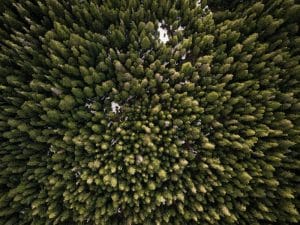Streams, lakes, wetlands and their riparian areas (i.e., streamside vegetation) are protected in BC as instream habitat in the form of water, trees, shrubs. Protection is provided under the Riparian Areas Regulation (RAR), which was enacted under Section 12 of the Fish Protection Act in July 2004. The Fish Protection Act was subsequently re-titled the Riparian Areas Protection Act in February 2016. The RAR is the minimum protection for streams and riparian areas that must be adopted by local governments. It calls on local governments to protect riparian areas during residential, commercial, and industrial development by ensuring that a Qualified Environmental Professional (QEP) conducts a science-based assessment of proposed activities.
 The purpose of the RAR is to protect the many and varied features, functions and conditions that are vital for maintaining stream health and productivity including:
The purpose of the RAR is to protect the many and varied features, functions and conditions that are vital for maintaining stream health and productivity including:
- sources of large organic debris such as fallen trees and tree roots;
- areas for stream channel migration;
- vegetative cover to help moderate water temperature;
- provision of food, nutrients and organic matter to the stream;
- stream bank stabilization; and
- buffers for streams from excessive silt and surface run-off pollution.
In 2018, a Provincial Professional Reliance Review was submitted to the Ministry of Environment and Climate Change Strategy recommending changes and improvements to the RAR. Most of the recommendations are related to strengthening the public relations model, incorporating training requirements, providing additional detail and rigour in the application of regulatory standards and allowing for oversight by the Ministry of Forests, Lands, Natural Resource Operations and Rural Development. The recommendations requested development of professional guidelines by relevant professional associations.
As a result of this report amendments to the July 2004 RAR were made and came into force on November 1, 2019. Fundamental requirements under the RAR for local governments, proponents and QEPs have not changed. These include assessment methodology, reporting requirements, review standards, features, functions, and conditions that contribute to fish habitat. The option for a Department of Fisheries and Oceans Canada ‘Authorization’ under the Fisheries Act also remains the same as previous legislation if RAR does not apply.
The following are the key amendments:
Amendment #1: Approval / Rejection of Reports
- Currently, the Ministry cannot approve / reject reports, only recommend amendments. Under the amended regulation, notifications may be withheld until deficiencies to reports are fully addressed.
Amendment #2: Variance Protocol
- To date the variance protocol for setbacks has been used only as a guidance document and has not had regulatory force. Submissions of variances to-date have been assessed only as not meeting the RAR methodology. This caused confusion for local governments. The new regulatory language / methods for variance protocols will provide a quantitative approach to determining allowable encroachment into a setback zone for a stream. Prescriptive methods for managing with “Undue Hardship” situations will be provided in the future. However, Undue Hardship cases will still not be allowed where alternatives are available (e.g., avoidance).
Amendment #3: Qualified Environmental Professional Training
- All Qualified Environmental Professionals will now need to take the Riparian Areas Regulation training course and retraining will be required every 5 years.
Additional language changes in the regulation include:
- Local governments having the ability to provide more guidance to proponents on the selection of QEPs.
- Reports will only be valid for 5 years and a new online submission for reports will support the amended regulation.
- A QEP will now be required to confirm that no development will occur in the Streamside Enhancement Protection and Enhancement Area (SPEA).
- Streamside Protection Enhancement Area is redefined and the “potential vegetation” description has been removed. A SPEA now is defined as “….land adjacent to a stream boundary, that links aquatic to terrestrial ecosystems, and is capable of supporting streamside vegetation. An area of human disturbance must be considered to be capable of supporting streamside vegetation if the area would be capable of supporting streamside vegetation were the area is in a natural condition.”
- Clarification has been made to where the regulation does not Application of the regulation will not apply in relation to: repairs or other non-structural alterations or additions to a building or other structures; if the structure will remain on its existing foundation and within the existing footprint; and is not damaged or destroyed to the extent of ≥75% the value above foundation or the maintenance of an area of human disturbance, other than a building or other structure if the area is not extended and the type of disturbance is not changed.
- Stream Boundary definition has been clarified and updated to include, the boundary of the active floodplain, if any, of the stream.
- Active Floodplain is now clearly defined to include land that is inundated by the 1 in 5 year return period flow of the stream.
- “Grandparenting” has been clarified. This “Area of Human Disturbance” has been defined as an area that is subject to enduring disturbance as a result of human occupation or activity. This includes footprints of buildings and structures, areas where soil or vegetation has been removed or altered, areas modified for agricultural use, areas used for resource extraction that have not been restored to natural conditions and areas occupied by invasive plant species that precludes the establishment of native plant species.
For more information on how Keystone Environmental can assist you with this or other Environmental issues please contact Raminder Grewal at 604-430-0671 or rgrewal@keystoneenvironmental.ca.

